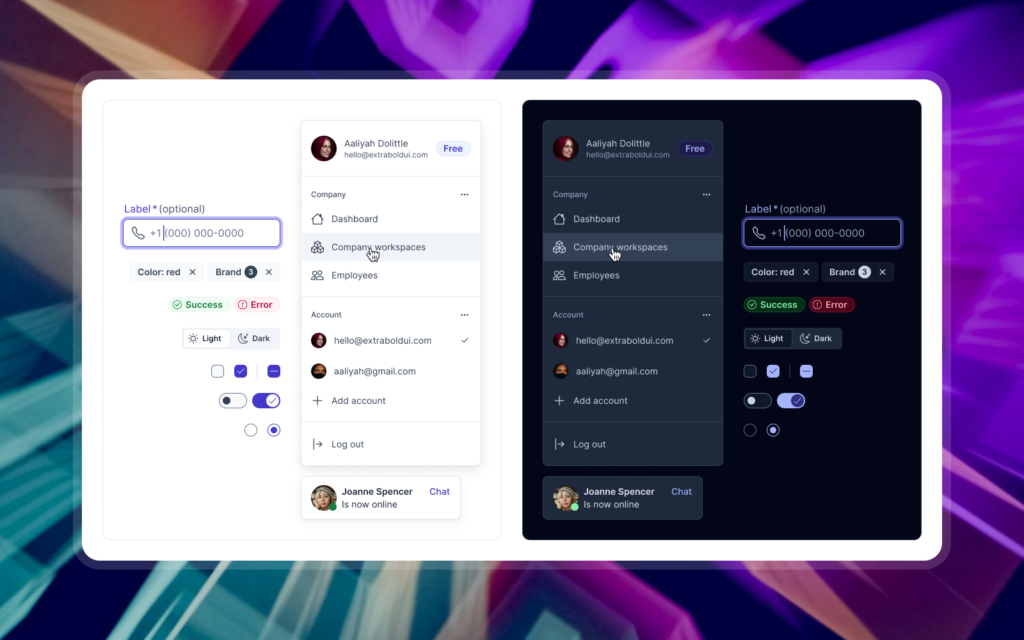A single source of truth
When designers, developers, and product managers reference the same components and tokens, guesswork disappears. Components are the canonical building blocks. Tokens hold the values for color, type, spacing, and motion. Together they form a single source of truth that reduces disputes and removes the need to hunt for the right asset. Changes applied to the system propagate down to pages and code, so fixes are fast and consistent.
Faster, clearer handoffs
Poor handoffs add friction at every stage. A design system formalises what should be delivered: named components, clear states, usage notes, and code references. Developers no longer interpret mockups. They use the same components in code. Designers no longer explain basic interactions. They focus on intent and edge cases. That shift shortens development cycles and raises the chance that the shipped product matches the design intent.
A shared vocabulary
Words matter. If one team calls a spacing token space-3 and another uses m-md, decisions become debates. A design system defines names and meanings. That shared vocabulary streamlines conversations, clarifies tickets, and reduces back-and-forth in reviews. When everyone speaks the same language, collaboration becomes a matter of trade-offs rather than translations.
Clear responsibilities and governance
Teams without rules tend to accumulate ad hoc solutions. A design system establishes governance: who owns components, how to propose changes, and how to approve updates. That governance can be light and practical. It prevents multiple variants of the same component from proliferating and ensures the system remains usable instead of becoming a second source of chaos.
Better onboarding and knowledge transfer
Bringing new team members up to speed costs time. A well-documented system shortens that curve. New designers see patterns instead of isolated pages. New developers find implementation examples and code snippets. The system becomes the onboarding manual that scales knowledge across the organisation and reduces the burden on senior staff.
Reduced rework and faster iteration
When basic decisions are already solved, teams can iterate on product problems rather than rebuild UI fragments. Reusing tested components lowers regression risk and makes experiments safer. Teams can prototype features faster, push updates more often, and measure results sooner.
Cross-functional alignment
Design systems are more than a designer tool. They align product, design, engineering, and QA around common expectations. Product owners get a clearer estimate of effort because components and patterns are known quantities. Engineers can predict integration work. QA can focus on integration and edge cases instead of visual mismatches. That alignment makes roadmaps more reliable.
Practical steps to turn chaos into clarity
Start with the essentials. Define a small set of core tokens and the most-used components. Document patterns with purpose and constraints. Establish a lightweight contribution flow for adding or changing components. Integrate the system into design tools and into the repository for developers. Automate versioning and release notes so teams can adopt updates without manual syncs. Finally, treat accessibility and internationalisation as baseline requirements rather than optional extras.
Measure what matters
Track the system’s impact. Measure time saved on design and development tasks. Count fewer visual regressions in QA. Monitor onboarding time for new hires. Use those signals to prioritise which parts of the system need investment. Metrics turn the design system from a vague organisational asset into a demonstrable resource.
A design system is not a one-time project. It is living infrastructure. When it is tended, it turns scattered decisions into a coherent toolkit that scales across people and products. The result is clarity in design, speed in delivery, and fewer arguments over details that do not move the product forward.

